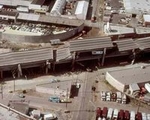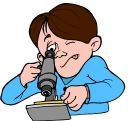
Worksheets and No Prep Teaching Resources
Reading Comprehension Worksheets
Earthquakes

Earthquakes
 Worksheets and No Prep Teaching Resources Reading Comprehension Worksheets Earthquakes |
 Earthquakes |
| edHelper's suggested reading level: | high interest, readability grades 6 to 7 | |
| Flesch-Kincaid grade level: | 6.04 |
|
Measuring Earthquakes
By Patti Hutchison |

|
 1 The Earth's crust is made up of many sections, called tectonic plates. These plates are always moving. Because of friction, the edges of the two moving plates may become stuck as they move against each other.
1 The Earth's crust is made up of many sections, called tectonic plates. These plates are always moving. Because of friction, the edges of the two moving plates may become stuck as they move against each other. |
Create Weekly Reading Books
Prepare for an entire week at once! |
| Leave your feedback on Measuring Earthquakes (use this link if you found an error in the story) |
 |
Earthquakes
|
 |
Special Education Science Materials for Teachers
|
 |
Science
|